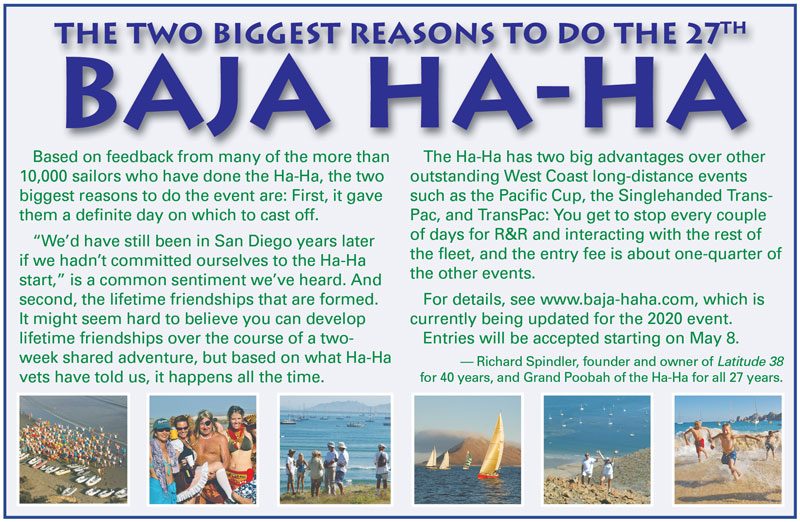
Preparing for a Puddle Jump: Lessons Learned by 2019 First-Timers
When I crossed the equator for the first time last May, I paid tribute to the ocean by pouring out a tipple of precious rum. I’d brought just one large bottle for the trip, because I’d heard that cruisers are only permitted to have a total of six liters of alcohol aboard when they arrive to French Polynesia. I don’t regret sharing my favorite libation with the sea deities, but just like so many things I’d heard before departure, the six-liter rule was a bit of a myth, and one of many lessons that my newbie cruiser friends and I learned during the 2019 Pacific Puddle Jump. From rum shortages to engine issues, our hard-earned knowledge will help other first-timers prepare for the challenges ahead, and avoid sinking into low spirits.
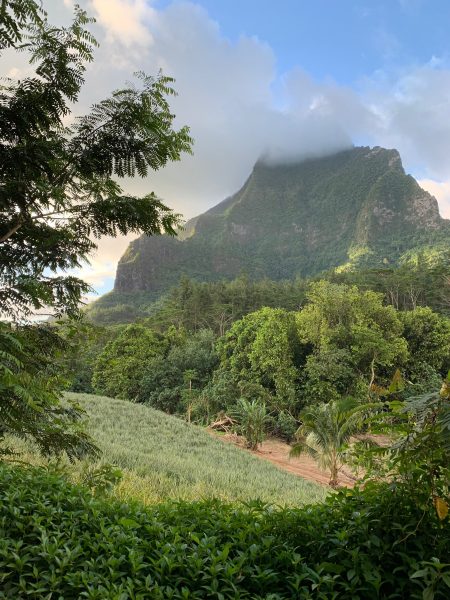
Many of us Puddle Jumpers in the 2019 fleet were new to full-time cruising, with perhaps a Baja Ha-Ha under our belts, or a few years of experience in Mexico or the Carribean. The long passage across the Pacific into remote islands was a wholly new experience. At 3,000 to 4,000 nm, the journey is one of the longest bluewater crossings a cruiser can do, and lands you in far more isolated places for a longer stretch of time, demanding a different approach to preparations. Despite reading the accounts of experienced cruisers and attending helpful seminars, we still faced challenges that could have been eased with a few minor adjustments to our preparations. There were some general trends in learning among the 2019 PPJ fleet, especially when it came to provisioning, mechanical issues, and keeping the crew and skipper happy.
Provisioning Wisely
“Everyone says there’s nothing available in the South Pacific,” says Cody Heath of Zoe from Houston, Texas. “That’s not true; there is everything — help, parts, food — it’s just different from what you’re used to, and may be expensive.” Depending on your budget, provisioning most of what you need before leaving the Americas can be the difference between a successful, happy experience and feeling miserably deprived in the South Pacific.
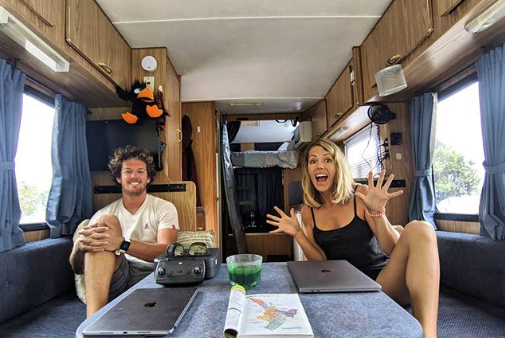
If you’re budget-conscious, you may find the “good stuff” too pricey for purchase in the South Pacific. “Take as much as you can of the things you like or have an attachment to, especially your favorites,” says Flo Benincasa of Flocerfida, echoing the sentiments of many 2019 alums. “Plan to have enough to last you until you reach a really big port, like New Zealand.” (She notes that even Tahiti falls short of the price and selection in Mexico or the US.)
Where did Flocerfida go wrong? They skimped on one of their favorites: whiskey. “Alcohol is expensive in the South Pacific, and, even in New Zealand, it’s $32 US for a bottle of whiskey,” says Benincasa, who wishes they’d stocked up before leaving Mexico. Not only is hard liquor pricey in Polynesia, but the cheapest wine is around $10 US, and even local Tahitian rum is never priced below $18 US per bottle. The prices skyrocket quickly for even slightly better-quality booze. The official rule that you can’t enter French Polynesia with more than six liters of alcohol seems to go completely unenforced, so “bring 10 times the amount of alcohol you expect to consume,” says Heath of Zoe. “Everyone entertains!”
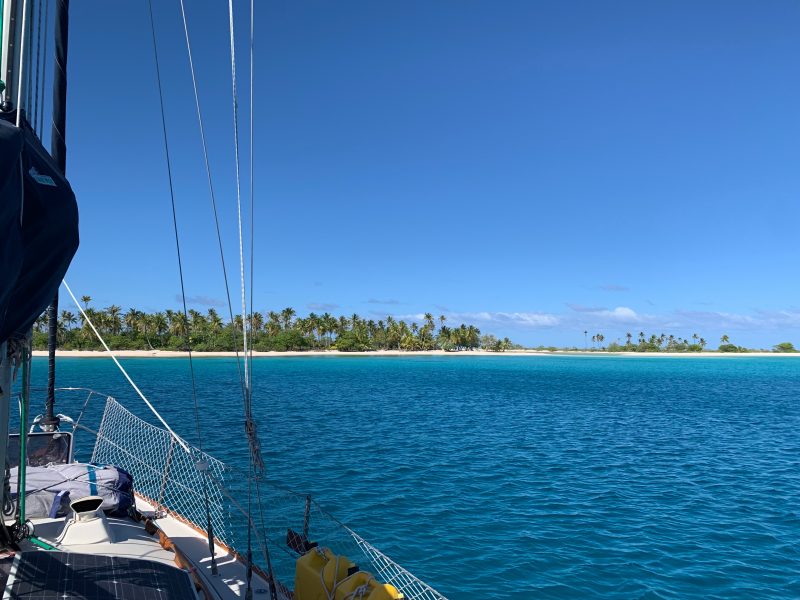
Puddle Jumpers need to provision not only their favorites for the whole season, but completely different foods for the long passages. Kathy and David Bennett, of Pacific Destiny from Alameda, shared an experience echoed by many in the 2019 fleet; “We typically don’t eat much processed or prepared food, but on the long passages these became extremely important, because we could still have a balanced meal even when we didn’t want to turn on the stove.” Everyone seems to agree that pre-cooked foods got them through the unavoidable bad weather, and nearly every sailor admitted that cookies, crackers, and other snacks seemed essential to night watches (even for those who typically don’t eat these things). Other popular “quick” foods included:
- sandwich bread
- large tortilla-type wraps
- cooked lentils
- cans of pre-made soup
- nuts
- UHT pouches of prepared rice or curries
- parboiled or quick-cook grains (quinoa, couscous)
When it comes to stocking up on favorite provisions, everyone has their own preferences. I love honey, and I’d heard it was expensive in French Polynesia. But while honey was pricey, it was also readily available, delicious, and often locally made. There are other hard-to-find treats, though, so you’ll want to bring them with you. These include:
- muesli, oatmeal, and chia seeds
- maple syrup
- coffee beans
- sprouting seeds
- whole-wheat flour
- regular yeast packets (quick-rise is available but behaves differently and spoils quickly)
- shelf-stable meats like jerky, pepperoni, salami, and sausages
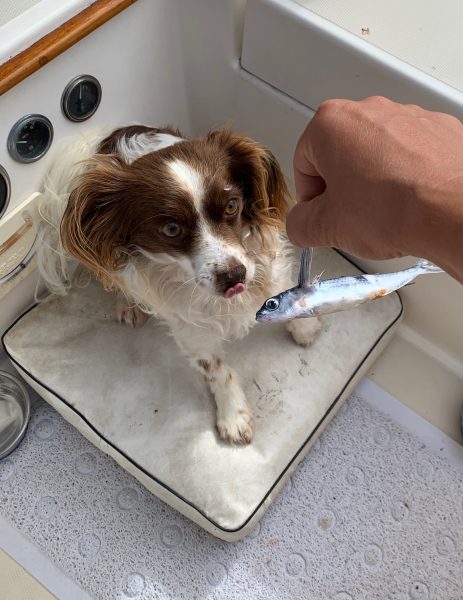
“But don’t overstock the basics,” warns Elizabeth Stacey of Irwinish from Miami, “because these foods are subsidized throughout French Polynesia [even on rural atolls] at prices comparable to the US or Mexico.” Subsidized foods have their prices marked in red, and include: flour, canned vegetables, cream crackers, lentils, beans, grains, pasta, tomato sauce, powdered milk, butter, instant coffee, and fresh baguettes.
Don’t be afraid to try different foods in the French supermarkets, because some are actually better than in the Americas. When Jan Alexander of Hanna (Wappingers Falls, NY) had me over for dinner, she served French mashed potatoes that were so good I had no idea they were instant. Canned butter from New Zealand is also surprisingly tasty, and French baking chocolate tastes like good dark chocolate (and costs less than regular chocolate bars).
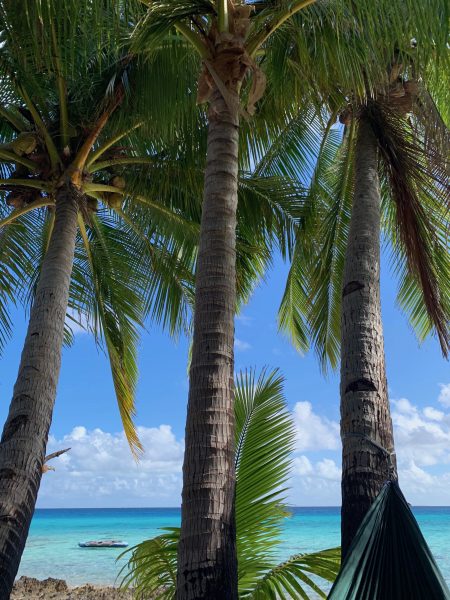
Don’t forget your favorite household items. “We didn’t bring enough marine toilet paper,” says Audrey Toal of Wild Orchid from San Diego, who prevents head plumbing problems by flushing no other kind. I found myself searching for fly tape to deal with the proliferate Polynesian fruit flies, but couldn’t find it anywhere.
Along with chemical-free pest-control products, other household items that cruisers forgot included machetes for coconuts, empty water jugs, insulated drink bottles that don’t overheat in the sun, and plenty of topical benadryl or hydrocortisone to treat rashes and bites.
But even if you provision well, you’re still going to find shopping in Polynesia to be quite a different experience. The best piece of advice I’ve heard was from Elizabeth Stacey of Irwinish: “The key to a happy cruise is to let go of the idea that you can have everything just as you do at home. The faster you can let that go, the better off you’ll be.”
The National Weather Service Asks You to Change the Weather
A friend of Latitude wrote in to let us know the Coast Guard Maritime Commons — a Coast Guard blog for maritime professionals — is soliciting feedback.
The Coast Guard and the National Weather Service are conducting a survey of the maritime public in order ro gain a better understanding of the current use of marine weather information, and to determine the level of interest in potential future products.
If you feel you’ve never had a chance to change the weather now is your time. You can fill out the survey here.
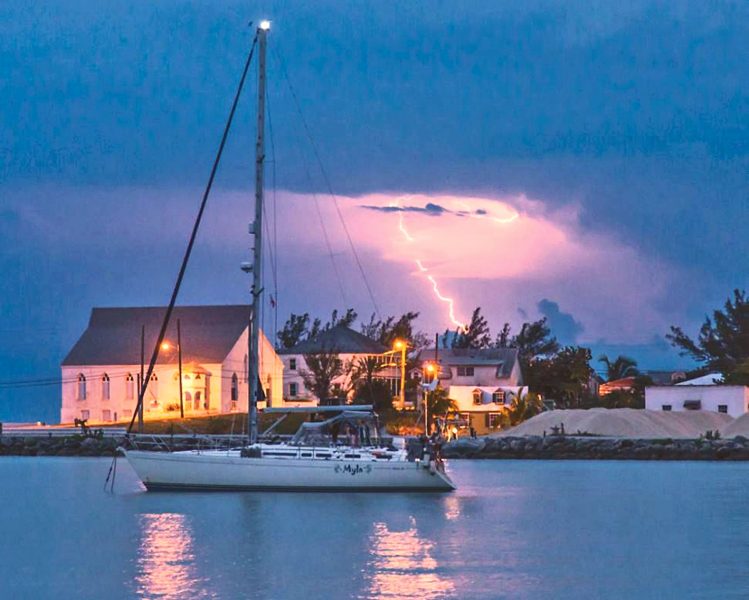
Two Big Reasons to Do the Baja Ha-Ha
A Sneak Peek at March Racing
The San Francisco Bay Scene
On March 7-8 Richmond Yacht Club will host the Big Daddy Regatta, with fleet racing on Saturday, a party on Saturday night, and the usual pursuit race on Sunday.
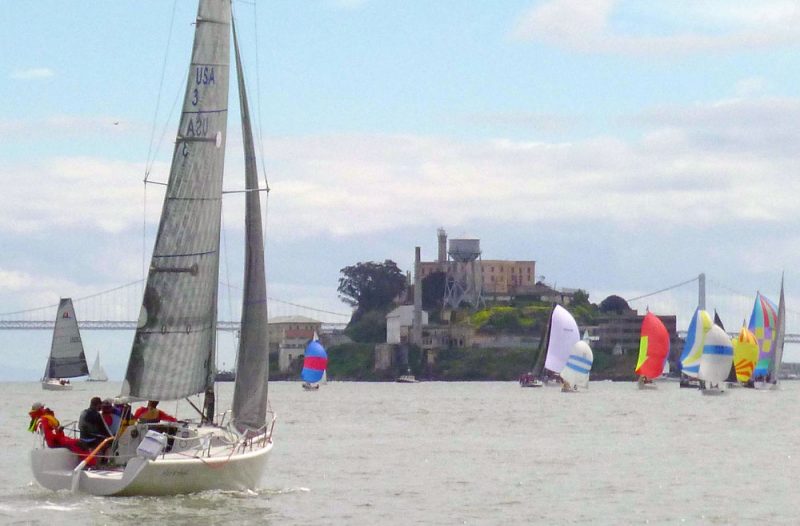
On the same weekend, the second stop in the California Dreamin’ match-racing series comes to St. Francis YC. The club follows that up on March 14-15 with the Spring One Design Regatta and on March 21-22 with Spring Dinghy.
Preparation for the Singlehanded Transpacific Race and other Hawaii races continues on Wednesday, March 11, with a seminar about Rigging and Sail Plans, with Ryan Nelson of Rogue Rigging, at Oakland YC in Alameda at 7:30 p.m. See www.sfbaysss.org.
Oakland YC invites singlehanded, doublehanded and fully crewed boats to compete in the Rites of Spring on March 21.
One of Island YC’s signature races, the Sadie Hawkins, is on the schedule for March 28. It’s a women skippers’ race on the Estuary for fully crewed boats. IYC’s fate is up in the air at the moment, however, as they’ve been evicted from their clubhouse in Alameda Marina ahead of the redevelopment of that property. We’ll keep you posted.
Another choice on March 28 is Sausalito YC’s Jaws Pursuit Race, which starts and finishes off the clubhouse deck in Richardson Bay.
Truls Myklebust, commodore of the Bay Area Multihull Association, writes, “BAMA has a few events coming up in March:
- March 14 — Live Crew Overboard Training. Here’s your opportunity to practice live crew overboard recovery, with the safety of support craft on site and additional eyes on the person in the water. For additional information, and for registration, please go to Jibeset: www.jibeset.net/BAMA000.php?RG=T005297370 (note: registration is limited to 15 boats).
- March 26 — Skippers’ meeting for the 2020 Doublehanded Farallones Race at 7 p.m. at Oakland Yacht Club.
- March 28 — 2020 Doublehanded Farallones Race. This is the 41st running of the classic Doublehanded Farallones Race. This year, the rounding of the island is allowed in either direction. Registration is on Jibeset: www.jibeset.net/BAMA000.php?RG=T002079021.”
San Diego Sorties
San Diego YC and Coronado YC will host the San Diego NOOD Regatta on March 20-22. See www.sailingworld.com/helly-hansen-nood-regatta-in-san-diego.
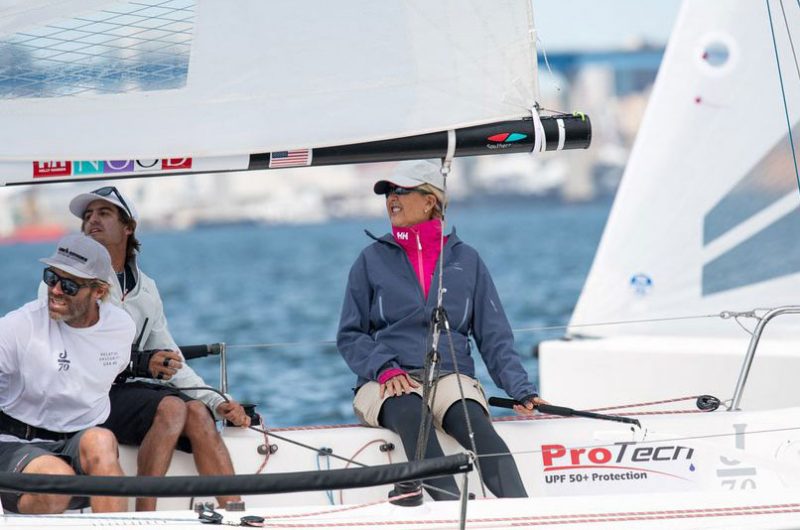
Also in San Diego, Silver Gate YC will again welcome classic beauties big and small for the America’s Schooner Cup on March 28. The regatta benefits the Navy-Marine Corps Relief Society.
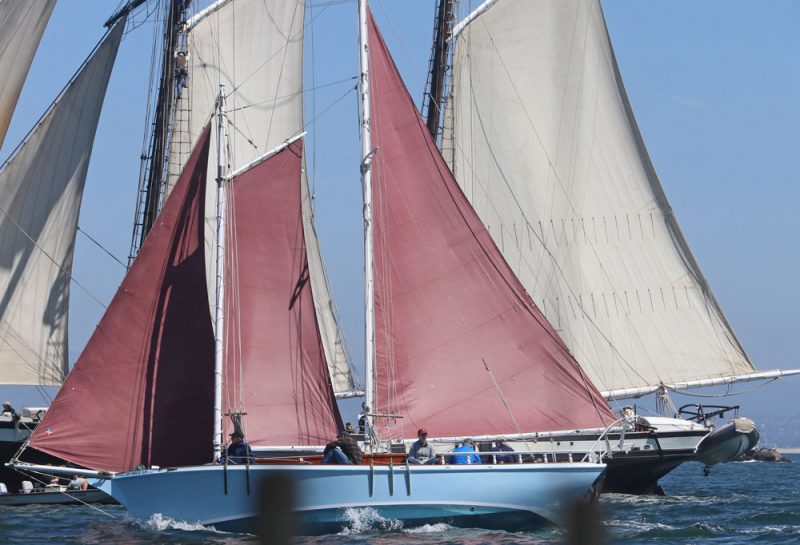
Mexico or Bust
The 1,000-mile San Diego to Puerto Vallarta Race kicks off the Mexico racing season on March 5. The race down the coast will serve as the first big regatta in an ambitious campaign by three families on the Volvo 65 Viva Mexico. The team plans to follow up with the Transpac Tahiti Race in May — and eventually The Ocean Race around the world starting in October 2021. You’ll be able to read more about that program in Sightings in the March issue of Latitude 38, hitting the docks on Monday, March 2.
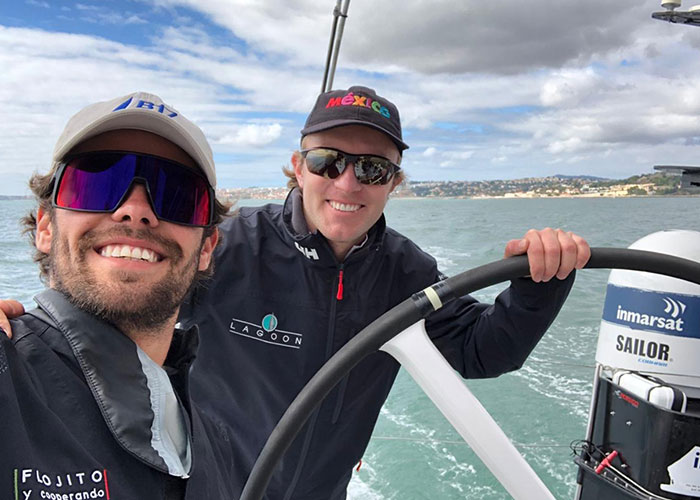
The PV Race feeds into MEXORC on March 13-18.
The Banderas Bay Regatta continues the Mexico events on March 24-28, with friendly racing for cruisers.
We’ve listed a few popular events in this post, but many more populate the racing calendar. See lots more, including Midwinter series winding down and Beer Can races starting up, in the 2020 Northern California Sailing Calendar and YRA Schedule. We’ll update our monthly Calendar on March 2.
Happy (Almost) Birthday, Paul Elvstrøm
We’d like to wish a happy birthday to the late, great Paul Elvstrøm, who would have been 92 years old tomorrow. A dinghy sailing master, four-time Olympic gold medalist and 13-time world champion, the Danish-born Elvstrøm passed away in 2016 at the age of 88.
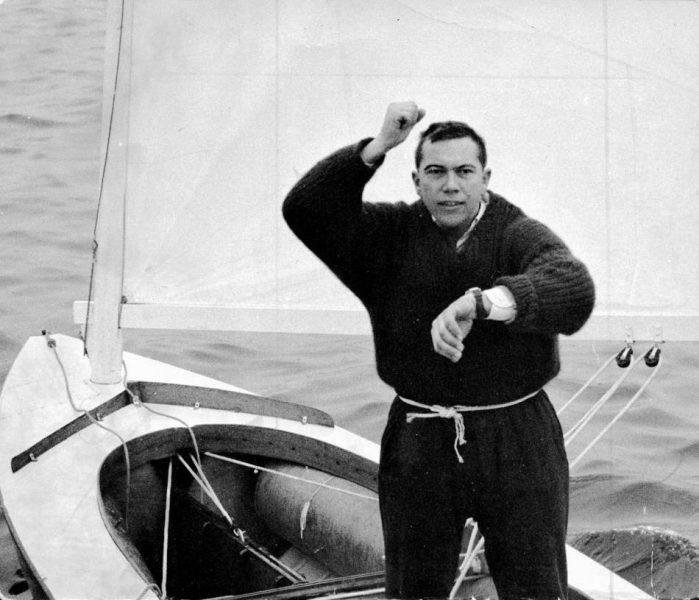
Like many of the world’s great athletes, Elvstrøm was a ‘natural’ from the time he first set foot in a sailboat at the age of 9. He grew up a stone’s throw from the Oresund, a strait that forms the border between Denmark and Sweden. The third son of a widowed mother, young Paul was a poor student (his struggles with reading might today be diagnosed as dyslexia), but a superb athlete. He excelled at all forms of sport in the water and out, but his mother encouraged his sailing the most, since “it kept him off the streets.”
He took to sailing like a bird to flight. But what made him different from others right from the start was his constant analysis of what was happening, his ‘wind-whisperer’ sixth sense of what the breeze was doing, his relentless and often brutal training regimens, his tactical and hardware innovations — the self-bailer was just one — and his passion for winning.
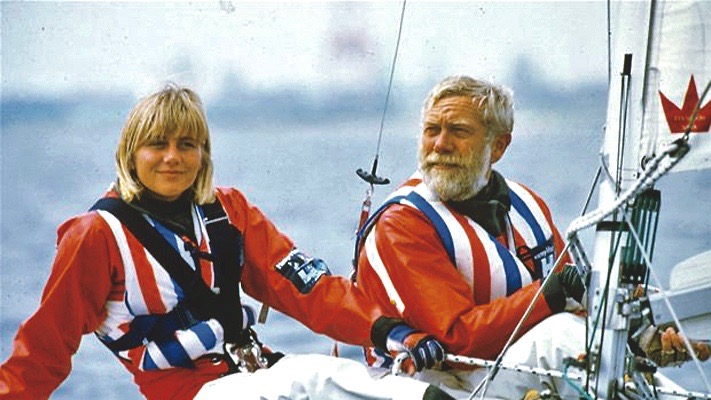
When the Finn replaced the Firefly as the solo dinghy at the 1952 Games in Helsinki, Finland, Elvstrøm won gold again, and again in 1956 and 1960. His record of four consecutive golds in four Olympics would stand for more than 50 years, before finally being matched by Britain’s Ben Ainslie in the 2000-2012 Games.
We were surprised to learn that Elvstrøm’s last race may have been sailed right here on San Francisco Bay. That was the Masters Regatta sailed on J/24s in the summer of 1990. Though he ended up with an unpracticed crew and a third in the series (organizer Don Trask won), he was the star of the show, hands down, with several invitees claiming they’d flown in from afar for the sole purpose of meeting and sailing with the legend, then 62 years old.
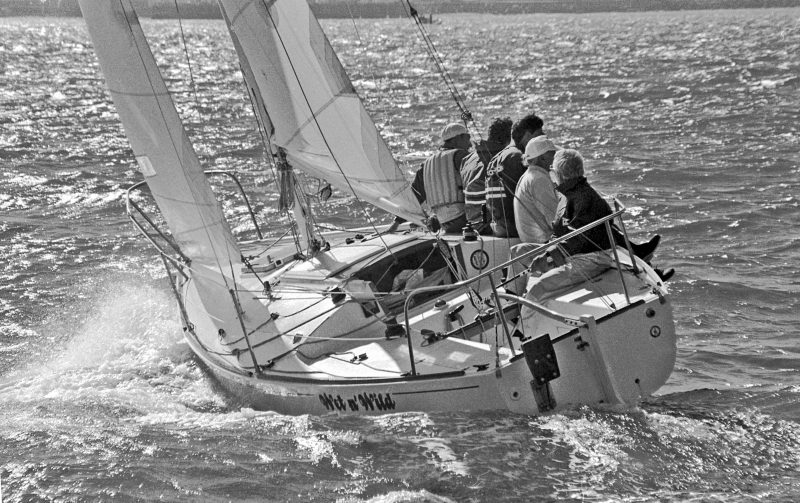
To read our 1990 interview with the maestro, go to www.latitude38.com/resources/, and school down to A Conversation with Paul Elvstrøm.
Did you sail with or against Paul Elvstrøm? We’d like to hear. Please comment below, or email us here.

